Strike Overview
- The debate between organic vs paid social media has long been a challenge for marketers.
- Should you rely on organic reach, leveraging its cost-effectiveness and potential for lead generation? Or is it worth investing in paid social media to amplify your content and reach a wider audience? Perhaps the optimal strategy lies in striking a balance between organic and paid efforts?
- Let’s look at what each social media marketing effort entails and how you can use it to your brand’s advantage.
Jump to Section
Get exclusive content on paid social media.
Join our mailing list for the latest updates.

How Does Your Organic Social Media Reach Compare to Paid Campaign Results?
Traditional advertising methods such as TV and print media, while still relevant, now take a back seat to digital marketing. Leveraging digital ads and targeted strategies can amplify brand awareness by up to 80%. Additionally, 58% of US consumers say they made purchases after encountering a brand’s ads on social media platforms.
Hence, it’s essential for advertisers to possess the knowledge required to utilize both paid ads and organic content effectively. Recognizing the distinct advantages of each approach is crucial, as both contribute uniquely to brand promotion efforts. As marketers, understanding how these two marketing strategies complement each other is key to fully maximizing their potential in promoting your brand.
What’s the Difference Between Organic and Paid Marketing?
There’s no denying the substantial reach achieved through both paid advertisements and organic social media content. But can you differentiate between the two?
Let’s quickly run through the distinctions between organic and paid social media.
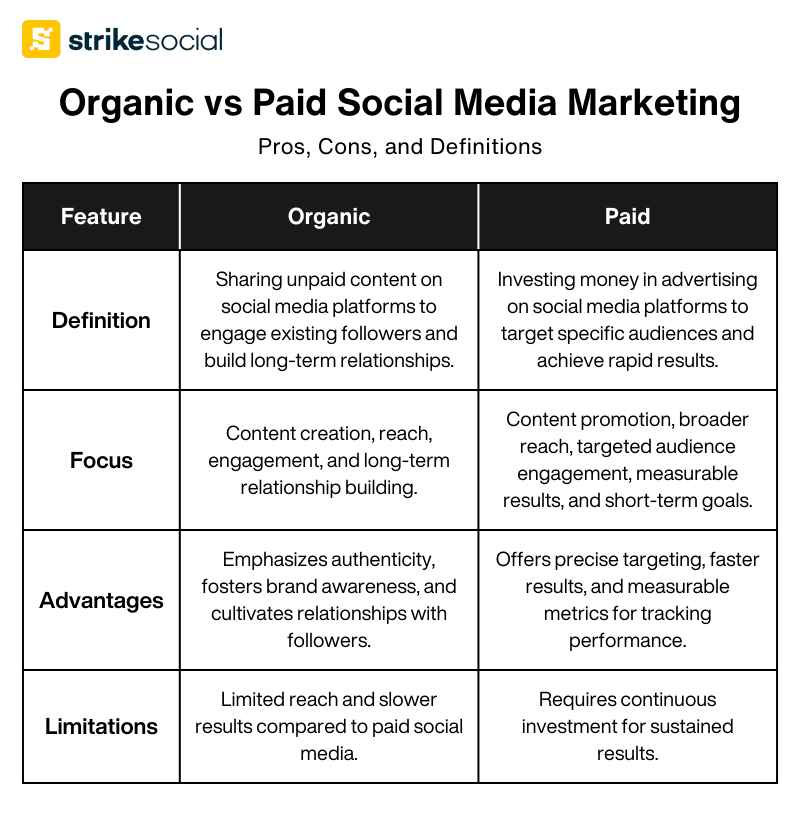
Organic and paid social media marketing strategies are no longer pitted against each other; rather, they work mutually to enhance brand visibility and engagement.
Organic social media efforts focus on fostering brand identity, engaging existing followers, and delivering value to current customers. Conversely, paid social media campaigns target new audiences, expand reach, and yield immediate results. By integrating both approaches, brands can adopt a comprehensive social media marketing strategy that capitalizes on the unique strengths of each.
Here are specific examples of how organic and paid social media marketing complement each other on different platforms:
Example of organic social media marketing: Run a trivia contest with engaging questions related to your brand to generate organic reach and comments.
Example of paid social media strategy: Promote the contest using image ads and utilize Lookalike Audiences, increasing participation from similar user profiles.
Example of nurturing your organic reach on Instagram: Share high-quality product photos and Reels using user-generated content (UGC), showcasing your brand in action to build brand loyalty.
Using paid social media campaign: Boost your Reels by featuring compelling visuals and influencer partnerships to drive traffic to your Instagram profile and product pages.
Further Reading
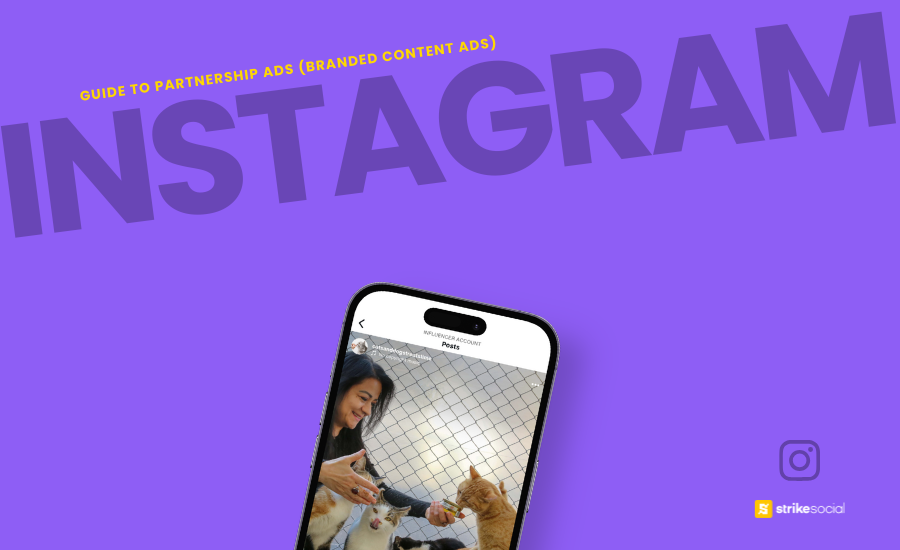
Maximize Influencer Collaborations with Instagram Partnership Ads
Instagram Partnership Ads allow advertisers to tap into creators’ established audiences, strengthening brand awareness through authentic and effective collaborations.
Example of organic social media marketing efforts: Publish informative articles and participate in industry discussions to establish yourself as a thought leader in your niche.
How to boost your reach with paid social media ads: Create a sponsored post to promote your articles to targeted audiences, increasing brand awareness among chosen industry professionals.
YouTube
Example of how to grow organically on YouTube: Create engaging video tutorials and product demos to showcase your expertise and benefits.
Example of increasing engagement through paid advertising: Run targeted pre- or mid-roll ads on relevant videos to drive brand awareness and website clicks.
TikTok
Generate organic growth on TikTok: Participate in trending challenges and utilize relevant hashtags to reach a wider audience organically.
Accelerate reach and views through paid ads: Utilize Spark Ads featuring your trending video content to increase reach and brand awareness among your selected demographic.
Differentiating the Results of Organic and Paid Social Media Marketing Activities
To better understand how your marketing efforts perform organically versus through paid advertisements, you must be able to distinguish between the two. This becomes particularly important when considering strategies to enhance your organic reach on Instagram, for example, such as promoting your Reels.
But how can you determine when organic methods are more effective versus the benefits of paid advertising for specific campaigns, or vice versa?
Expand the dropdown for each platform below to see how it works:
Meta (Facebook and Instagram)
To analyze boosted posts, you can assess your organic reach through Meta Business Suite and gain further insights into your paid social media marketing efforts via the Ads Manager.
For organic reach results:
1. From your Facebook Page account, expand the Manage Page menu by clicking the menu button.

2. Click on More tools and select Meta Business Suite from the dropdown.
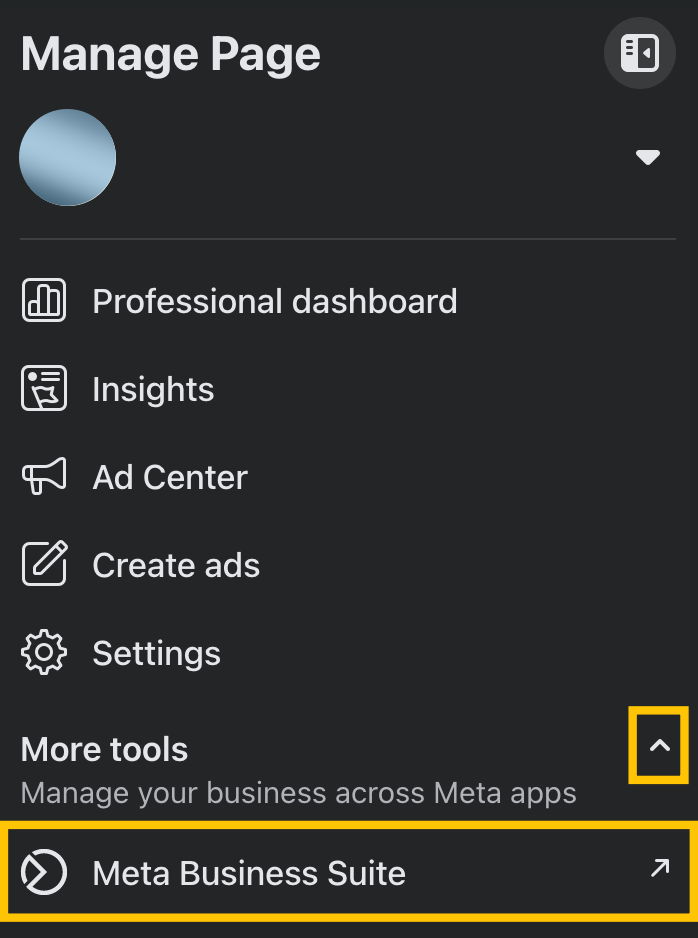
3. On the left-hand side, click on Content.
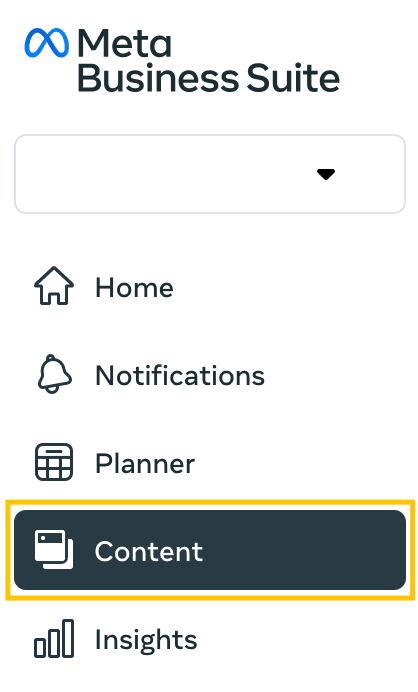
4. Find the content you wish to analyze.

5. Click the three dots next to the content and select View insights.
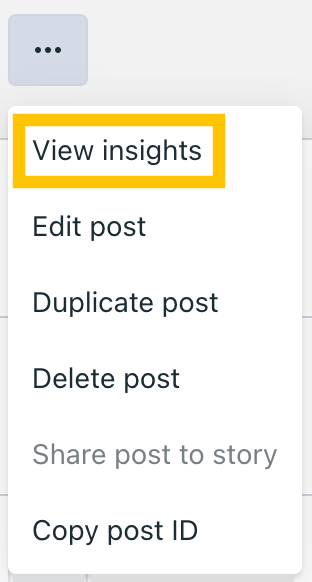
6. On the expanded screen, you’ll find your organic reach, along with any paid reach if you’ve boosted the content.
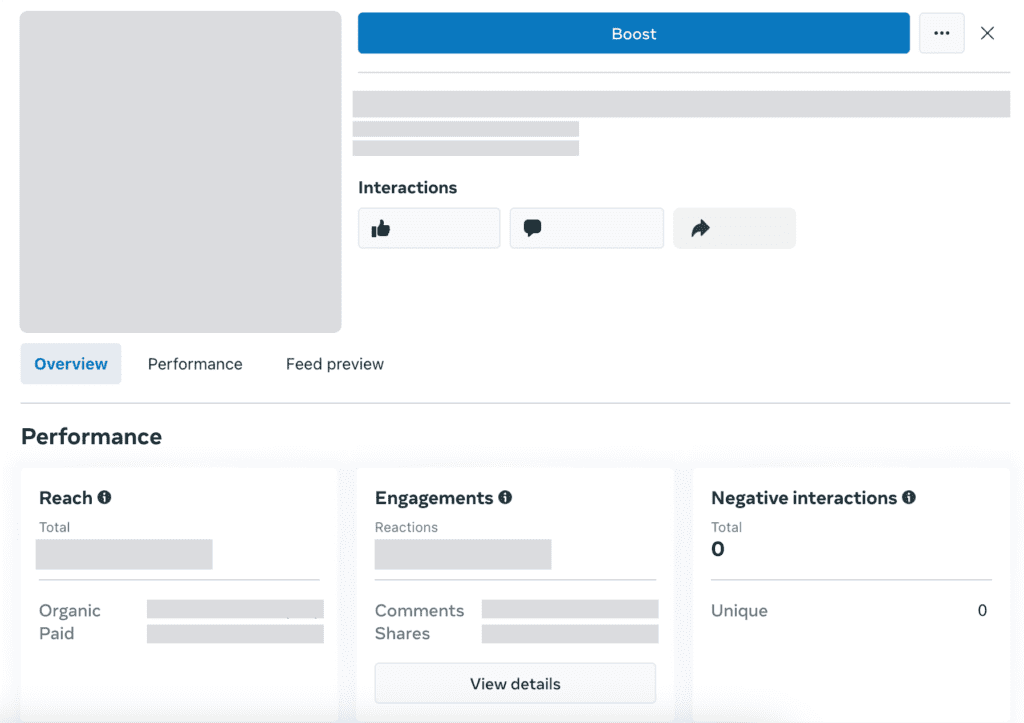
For paid reach results:
While it may appear under Meta Business Suite, you must be in the Ads Manager to get a deeper understanding.
1. From the Meta Business Suite, expand the left-side menu and click on All tools.
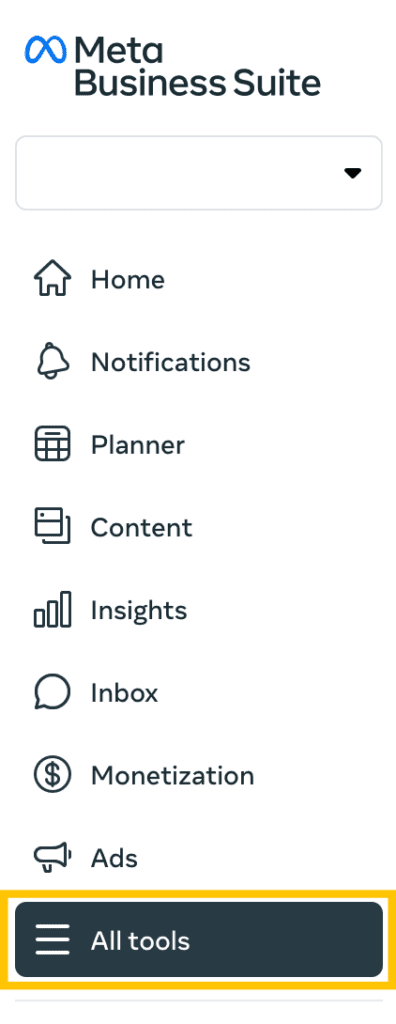
2. Search for “ads” or scroll to the Advertise section, then click on Ads Manager to open it in a new tab.
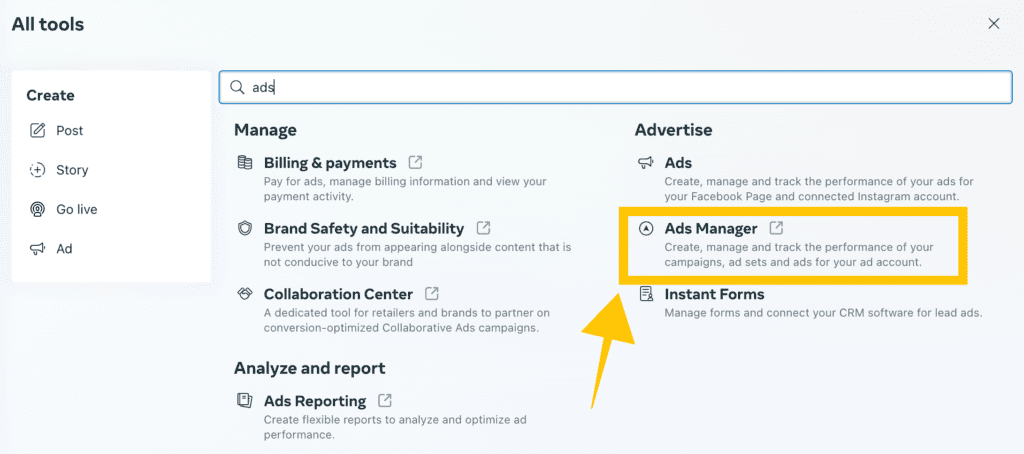
3. Expand the left-hand menu and click on Campaigns.

4. Locate the ad campaign containing your boosted post and navigate to the Ads sets or Ads tab to view paid social media engagement results in Meta.
- Results in Ads Manager depend on your conversion tracking and campaign objective (e.g., Awareness or Conversion).
- In addition to Reach, you’ll find Results (e.g., for conversion campaigns), cost per result, and total spend for your paid ads campaign.
LinkedIn operates similarly to Meta when it comes to boosting posts. On your LinkedIn page, you can view your overall reach and engagement, and gain deeper insights into your paid advertising efforts through the LinkedIn Campaign Manager.
To access your organic reach results:
1. Click on your profile picture on LinkedIn, and select the Company Page.
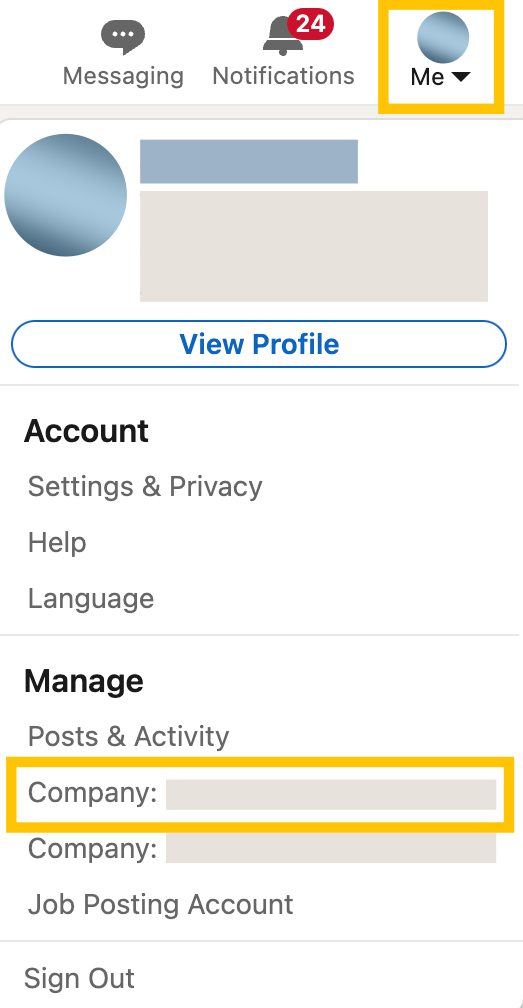
2. Scroll to the post for which you wish to view results.
3. Click on the dropdown menu labeled Preview results located just below the like and comment buttons.

4. You’ll see an overview of your post’s performance. Browse through the tabs from the total, organic, and sponsored results.
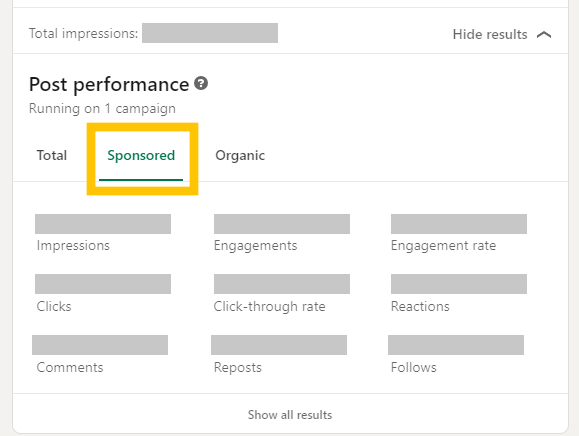
5. Alternatively, you can also click on the View results button at the top of the post to access detailed engagement data.
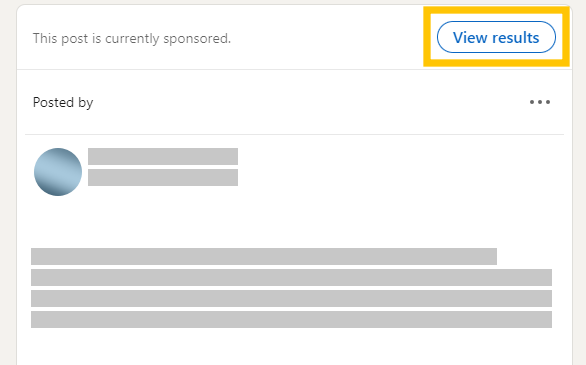
To view the results of your sponsored post campaign:
1. From your LinkedIn page, click on Advertise at the top right corner of the screen, directing you to the LinkedIn Campaign Manager.

2. Select the ad account associated with your company page.
3. Click on the Campaign group, then Campaigns, to obtain a comprehensive overview of your sponsored post results.
4. From here, you can analyze metrics such as budget spent, paid engagements or conversions, and cost per result, depending on your campaign objectives.
YouTube
Promoting your YouTube video ads does not impact the algorithm on your channel. Since your ads run through Google Ads, you can check your organic engagement on YouTube through your YouTube channel dashboard. For insights into your paid YouTube advertising, switch to the Google Ads platform.
Analyzing organic YouTube video ads performance:
1. Access your YouTube Studio dashboard at https://studio.youtube.com/ using the Google account associated with your YouTube channel.
2. Click on the Analytics tab located in the left-side navigation menu.
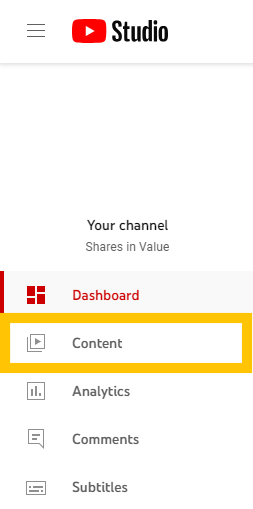
3. In the Analytics section, you’ll find an overview of key organic performance metrics, including views, impressions, click-through rate, and average view duration.
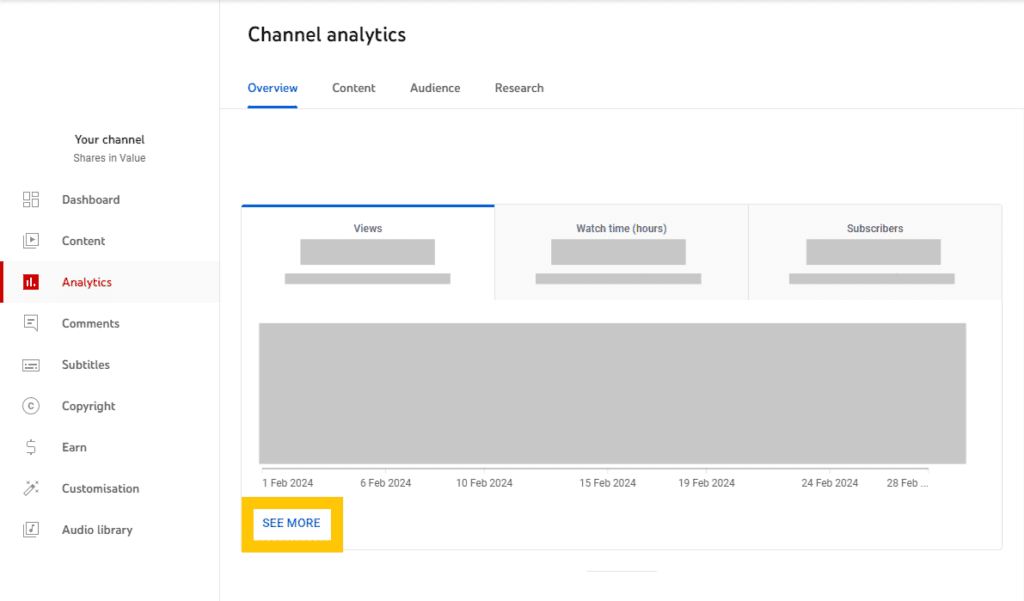
4. Click on See More to see the detailed metrics for each video content.
5. Scroll to the Content tab to view specifics for individual videos.
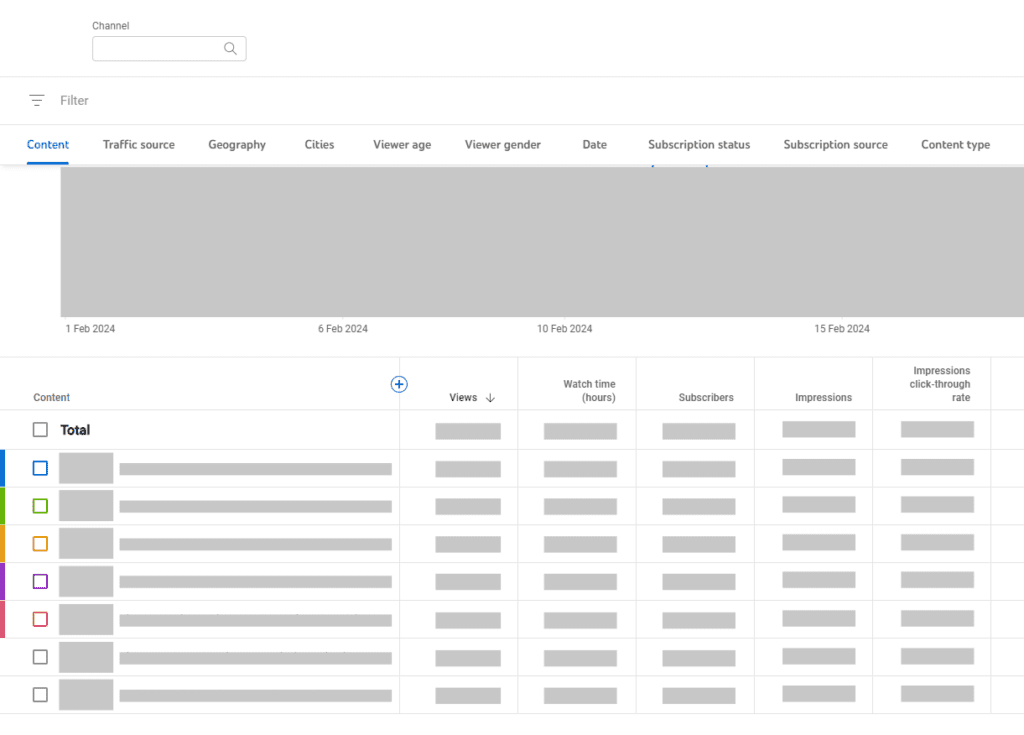
Assessing paid YouTube ad performance:
1. Log in to your Google Ads account using the same Google account associated with your YouTube channel.
2. Navigate to the Campaigns tab.
3. Identify the specific YouTube ad campaign you wish to analyze from the campaign list.
4. Within the chosen campaign, review various performance metrics such as impressions, views, cost, conversions, and cost per conversion or cost per view, depending on the campaign objective.
TikTok
Unlike other platforms where organic and paid content are displayed distinctly, TikTok seamlessly integrates promoted content into user feeds. By utilizing TikTok Spark Ads, you can promote your existing organic posts as paid advertisements. Here’s how to differentiate between organic and paid views:
Measuring organic TikTok video performance:
Access your organic performance metrics within the TikTok Business Suite by following these steps:
1. From your TikTok account, click on your profile picture on the right side of the screen and navigate to Business Suite.
2. Click on Analytics, then Video, to see the performance of each of your TikTok video. Find the one you have boosted to see how it’s performing.
Evaluating paid TikTok video ad results:
1. From the Business Suite screen, click on Ads. You will be redirected to the TikTok Ads Manager.
2. Click on the Campaigns tab, and browse to the Ad group and Ad tabs to monitor the performance of your video ad.
3. You can then access the various performance metrics specific to your paid ads, including impressions, clicks, cost per click, and others based on your video ad campaign’s objective.
Balancing Organic and Paid Social Media Marketing Efforts
It’s essential to recognize that one social media marketing strategy cannot thrive without the other. It’s not a question of organic versus paid but rather how to integrate them effectively. Now that you have insights into assessing the impact of paid social media on organic reach and the performance of organic posts without paid campaigns, you’re better equipped to optimize both avenues.
As you discern the distinct impacts of organic versus paid ads, remember the value of a trusted partner who can help you maximize your reach by merging these marketing efforts. Schedule a free demo with our team of experts and discover the Strike Social difference.








